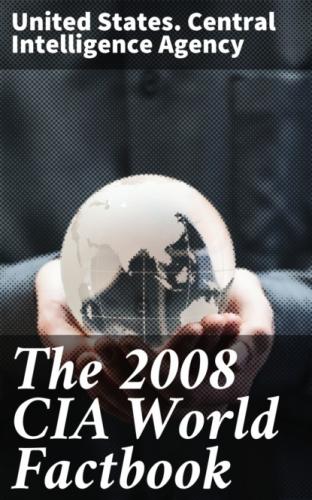Land use:
arable land: 12.05% permanent crops: 0.35% other: 87.6% (2005)
Irrigated land:
40 sq km (2003)
Total renewable water resources:
21.1 cu km (2005)
Freshwater withdrawal (domestic/industrial/agricultural):
total: 1.41 cu km/yr (56%/39%/5%) per capita: 1,060 cu m/yr (2002)
Natural hazards:
sometimes flooding occurs in the spring
Environment - current issues:
air polluted with sulfur dioxide from oil-shale burning power plants in northeast; however, the amount of pollutants emitted to the air have fallen steadily, the emissions of 2000 were 80% less than in 1980; the amount of unpurified wastewater discharged to water bodies in 2000 was one-20th the level of 1980; in connection with the start-up of new water purification plants, the pollution load of wastewater decreased; Estonia has more than 1,400 natural and manmade lakes, the smaller of which in agricultural areas need to be monitored; coastal seawater is polluted in certain locations
Environment - international agreements:
party to: Air Pollution, Air Pollution-Nitrogen Oxides, Air Pollution-Persistent Organic Pollutants, Air Pollution-Sulfur 85, Air Pollution-Volatile Organic Compounds, Antarctic Treaty, Biodiversity, Climate Change, Climate Change-Kyoto Protocol, Endangered Species, Hazardous Wastes, Law of the Sea, Ozone Layer Protection, Ship Pollution, Wetlands signed, but not ratified: none of the selected agreements
Geography - note:
the mainland terrain is flat, boggy, and partly wooded; offshore lie more than 1,500 islands
People
Estonia
Population:
1,307,605 (July 2008 est.)
Age structure:
0–14 years: 14.9% (male 100,143/female 94,450) 15–64 years: 67.5% (male 420,896/female 462,072) 65 years and over: 17.6% (male 76,171/female 153,873) (2008 est.)
Median age:
total: 39.6 years male: 36.2 years female: 43.2 years (2008 est.)
Population growth rate:
−0.632% (2008 est.)
Birth rate:
10.28 births/1,000 population (2008 est.)
Death rate:
13.35 deaths/1,000 population (2008 est.)
Net migration rate:
−3.24 migrant(s)/1,000 population (2008 est.)
Sex ratio:
at birth: 1.06 male(s)/female under 15 years: 1.06 male(s)/female 15–64 years: 0.91 male(s)/female 65 years and over: 0.5 male(s)/female total population: 0.84 male(s)/female (2008 est.)
Infant mortality rate:
total: 7.45 deaths/1,000 live births male: 8.62 deaths/1,000 live births female: 6.21 deaths/1,000 live births (2008 est.)
Life expectancy at birth:
total population: 72.56 years male: 67.16 years female: 78.3 years (2008 est.)
Total fertility rate:
1.42 children born/woman (2008 est.)
HIV/AIDS - adult prevalence rate:
1.1% (2001 est.)
HIV/AIDS - people living with HIV/AIDS:
7,800 (2003 est.)
HIV/AIDS - deaths:
fewer than 200 (2003 est.)
Major infectious diseases:
degree of risk: intermediate food or waterborne diseases: bacterial diarrhea and hepatitis A vectorborne disease: tickborne encephalitis (2008)
Nationality:
noun: Estonian(s) adjective: Estonian
Ethnic groups:
Estonian 67.9%, Russian 25.6%, Ukrainian 2.1%, Belarusian 1.3%, Finn 0.9%, other 2.2% (2000 census)
Religions:
Evangelical Lutheran 13.6%, Orthodox 12.8%, other Christian (including Methodist, Seventh-Day Adventist, Roman Catholic, Pentecostal) 1.4%, unaffiliated 34.1%, other and unspecified 32%, none 6.1% (2000 census)
Languages:
Estonian (official) 67.3%, Russian 29.7%, other 2.3%, unknown 0.7% (2000 census)
Literacy:
definition: age 15 and over can read and write total population: 99.8% male: 99.8% female: 99.8% (2000 census)
School life expectancy (primary to tertiary education):
total: 16 years male: 15 years female: 17 years (2006)
Education expenditures:
5.1% of GDP (2004)
Government
Estonia
Country name:
conventional long form: Republic of Estonia conventional short form: Estonia local long form: Eesti Vabariik local short form: Eesti former: Estonian Soviet Socialist Republic
Government type:
parliamentary republic
Capital:
name: Tallinn geographic coordinates: 59 26 N, 24 43 E time difference: UTC+2 (7 hours ahead of Washington, DC during Standard Time) daylight saving time: +1hr, begins last Sunday in March; ends last Sunday in October
Administrative divisions:
15 counties (maakonnad, singular - maakond): Harjumaa (Tallinn), Hiiumaa (Kardla), Ida-Virumaa (Johvi), Jarvamaa (Paide), Jogevamaa (Jogeva), Laanemaa (Haapsalu), Laane-Virumaa (Rakvere), Parnumaa (Parnu), Polvamaa (Polva), Raplamaa (Rapla), Saaremaa (Kuressaare), Tartumaa (Tartu), Valgamaa (Valga), Viljandimaa (Viljandi), Vorumaa (Voru) note: counties have the administrative center name following in parentheses
Independence:
20 August 1991 (from Soviet Union)
National holiday:
Independence Day, 24 February (1918); note - 24 February 1918 was
the date Estonia declared its independence from Soviet Russia; 20
August 1991 was the date it declared its independence from the
Soviet Union
Constitution:
adopted 28 June 1992
Legal system:
based on civil law system; accepts compulsory ICJ jurisdiction with reservations
Suffrage:
18 years of age; universal for all Estonian citizens
Executive branch:
chief of state: President Toomas Hendrik ILVES (since 9 October 2006) head of government: Prime Minister Andrus ANSIP (since 12 April 2005) cabinet: Council of Ministers appointed by the prime minister, approved by Parliament elections: president elected by Parliament for a five-year term (eligible for a second term); if a candidate does not secure two-thirds of the votes after three rounds of balloting in the Parliament, then an electoral assembly (made up of Parliament plus members of local governments) elects the president, choosing between the two candidates with the largest percentage of votes; election last held
